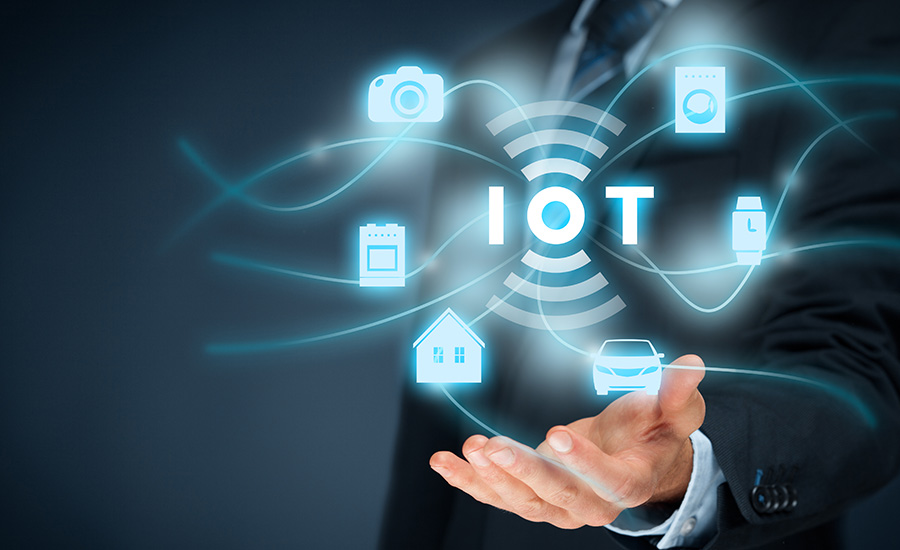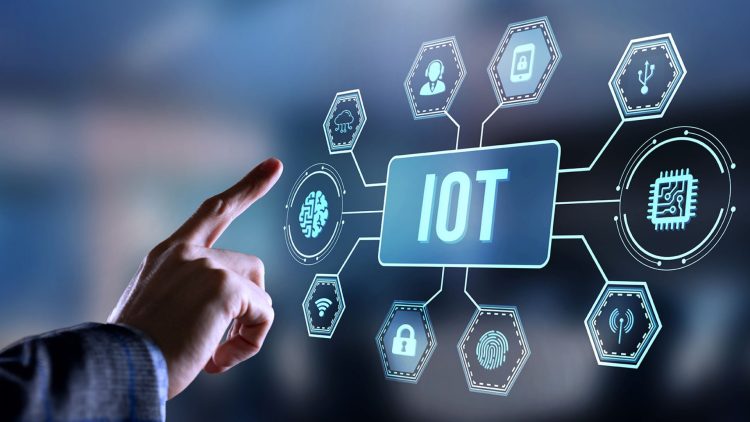Introduction
The Internet of Things (IoT) is transforming industries by enabling devices to communicate, share data, and automate processes across various sectors such as manufacturing, healthcare, transportation, and smart homes. IoT devices, such as sensors, wearables, smart appliances, and industrial machinery, are generating massive amounts of data and interacting in increasingly complex networks. However, this rapid expansion presents challenges related to security, interoperability, and management.
As IoT ecosystems grow more complex, the need for secure, transparent, and efficient ways to manage data and device interactions becomes paramount. Blockchain technology, with its core features of decentralization, immutability, and security, provides a promising solution to these challenges. By integrating blockchain with IoT, organizations can achieve secure interoperability between devices, automate device management, and establish trustless systems for transactions.
In this article, we will explore how blockchain can enhance the security, interoperability, and automation of IoT systems, addressing some of the most pressing challenges in the industry.
Section 1: The Challenges of IoT Ecosystems
1.1 Security Concerns in IoT
One of the primary concerns with IoT is security. IoT devices are often vulnerable to attacks due to their limited computing power and inconsistent software updates. Many IoT devices are connected to the internet with minimal built-in security features, making them attractive targets for cybercriminals.
Moreover, the sheer scale of IoT deployments increases the attack surface, as each device represents a potential entry point into a larger network. For instance, an attacker might gain access to a smart home’s security system through an insecure smart thermostat, which could then be used to compromise other connected devices.
1.2 Lack of Interoperability Between Devices
Another significant challenge in IoT is interoperability. IoT devices are often manufactured by different companies using diverse communication protocols and standards. This lack of compatibility makes it difficult for devices from different vendors to work together seamlessly.
For example, a smart home may have devices from different manufacturers (e.g., a thermostat from one company, security cameras from another, and lights from yet another), and these devices may use different communication protocols such as Zigbee, Z-Wave, or Wi-Fi. Without a unified standard or platform to integrate these devices, managing and coordinating them becomes a logistical nightmare.
1.3 Device Management and Automation
As IoT networks grow, so does the need for effective device management. Managing a large number of connected devices, ensuring their proper configuration, updates, and troubleshooting, becomes increasingly difficult. Many IoT systems rely on centralized servers or cloud platforms to manage devices, which can lead to single points of failure and downtime if the central system is compromised.
Additionally, automating tasks like data collection, monitoring, and response actions across a range of IoT devices is complex, especially when the devices are spread across different locations and networks.
Section 2: How Blockchain Solves IoT Challenges
Blockchain offers a unique approach to address the major challenges in IoT by providing a decentralized, secure, and transparent framework for device interaction, data management, and automation.
2.1 Enhancing Security with Blockchain
Blockchain’s decentralized nature makes it inherently resistant to single points of failure and external attacks. Instead of relying on a central server, IoT devices can interact with each other through a blockchain network, where each device acts as a node. This ensures that there is no central control point that can be attacked or compromised, and transactions are validated by consensus among the network participants.
Additionally, cryptography plays a key role in securing data on the blockchain. All communications between IoT devices can be encrypted, and each transaction or interaction can be digitally signed, ensuring the integrity and authenticity of the data being exchanged. For example, a smart lock might only allow access if the user’s identity is validated by a cryptographic key stored on the blockchain.
The use of blockchain also helps prevent data tampering. Since blockchain is immutable, once a piece of data is written to the blockchain (such as a device’s health status or usage statistics), it cannot be altered or deleted. This ensures that the data cannot be manipulated by unauthorized entities, which is critical for applications that rely on data integrity, such as healthcare monitoring or supply chain tracking.
2.2 Enabling Interoperability Between IoT Devices
Blockchain can facilitate interoperability among IoT devices by providing a unified protocol for communication. Instead of each device needing to adhere to a specific proprietary standard, IoT devices can use blockchain as a common platform for exchanging data, ensuring that devices from different manufacturers can interact smoothly.
For example, in a smart home, a security camera, thermostat, and lighting system can all use the same blockchain network to communicate and perform actions based on pre-defined rules. When one device needs to trigger an action on another device (such as dimming the lights when motion is detected), the transaction can be recorded on the blockchain, ensuring that all devices are synchronized and that the actions are executed in a secure and traceable manner.
Furthermore, smart contracts can be used to automate interactions between devices based on predefined conditions. For instance, a smart contract could automatically adjust the temperature of a home based on the weather forecast or the user’s location. These contracts would ensure that the devices are interoperable without the need for a centralized server or coordination platform.
2.3 Automating Device Management and Operations
Automation is one of the most powerful benefits of integrating blockchain with IoT. Blockchain’s smart contracts can enable devices to autonomously manage and perform actions based on specific conditions, without human intervention.
For example, in industrial IoT, sensors in a factory could monitor machine health in real-time. If a machine is nearing failure, the sensor could trigger a smart contract that automatically notifies maintenance teams or orders replacement parts directly from suppliers, all without needing to involve a central controller or human operator. This autonomous decision-making ensures that critical tasks are performed swiftly and efficiently.
Smart contracts also enable automatic software updates for IoT devices. If a device is found to have a vulnerability, a smart contract can trigger an update to the device’s firmware, ensuring that all devices in the network stay secure and up-to-date without manual intervention.
2.4 Providing Transparent and Auditable Data Management
Blockchain’s immutability and transparency provide a unique advantage in managing IoT data. Every action or transaction involving an IoT device can be recorded on the blockchain, creating an auditable and tamper-proof record of the device’s activity.
For example, in supply chain management, blockchain can be used to track the journey of goods from manufacturer to consumer. Each IoT-enabled sensor that checks the temperature, humidity, or location of the goods can record its readings on the blockchain, creating a verifiable trail of data. This provides both consumers and businesses with greater transparency and accountability.
In healthcare, blockchain can track the usage and performance of medical devices such as pacemakers or insulin pumps. The blockchain record would provide an immutable log of device interactions, ensuring that both patients and healthcare providers have a reliable history of the device’s performance and usage.

Section 3: Real-World Applications of Blockchain in IoT
3.1 IBM and the Food Trust Network
IBM’s Food Trust Network uses blockchain to ensure food safety and traceability throughout the supply chain. By integrating IoT sensors with blockchain, the platform can track the temperature and condition of perishable goods as they move through the supply chain. This provides real-time visibility into the condition of the goods and ensures that stakeholders can verify the authenticity and quality of the products.
The network connects farmers, distributors, retailers, and consumers in a decentralized manner, enabling each party to access secure, immutable data regarding the journey of the food. This not only ensures food safety but also helps reduce waste and improve overall efficiency.
3.2 Helium Network: Decentralized IoT Connectivity
The Helium Network is a decentralized wireless network for IoT devices. It uses blockchain to reward participants with cryptocurrency for providing wireless coverage for IoT devices. By utilizing blockchain, Helium enables secure and low-cost connectivity for IoT devices without relying on centralized providers.
Devices in the Helium network can communicate securely, and the blockchain-based reward system ensures that network participants are incentivized to contribute to the network’s growth. This creates a more efficient and resilient IoT infrastructure.
3.3 Everledger: Tracking Diamonds and High-Value Assets
Everledger is a blockchain-based platform that uses IoT devices to track high-value assets like diamonds, art, and wine. By combining IoT sensors with blockchain technology, Everledger provides end-to-end traceability of assets, from manufacturing to purchase. The system ensures that each asset’s authenticity is verified, and its journey is transparently recorded on the blockchain.
This is particularly useful for industries where counterfeiting and fraud are concerns. With blockchain’s immutability and transparency, both consumers and businesses can trust that the assets they are dealing with are legitimate.
Conclusion
Blockchain technology offers a transformative approach to addressing the challenges facing IoT ecosystems. By enabling secure, decentralized communication, interoperability, and automation, blockchain enhances the efficiency, transparency, and security of IoT systems.
As IoT networks continue to expand, blockchain will play an increasingly important role in enabling scalable, trustless, and autonomous interactions among devices. By ensuring secure interoperability, automating device management, and providing transparent data management, blockchain is poised to revolutionize the future of IoT, making it more efficient, secure, and trustworthy for industries across the globe.
The integration of blockchain and IoT will pave the way for smarter cities, more efficient supply chains, and advanced industrial automation, all driven by secure and autonomous device interactions.
















































